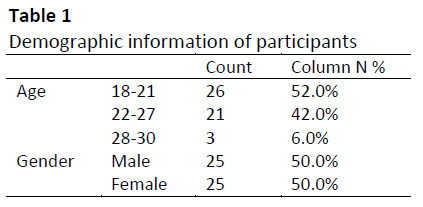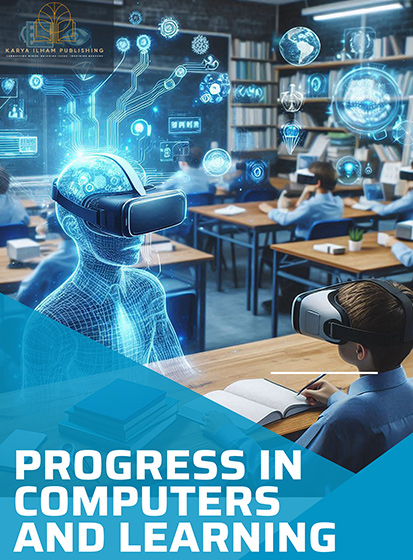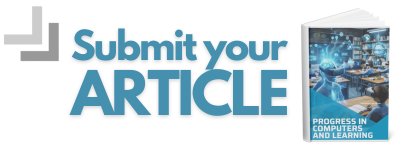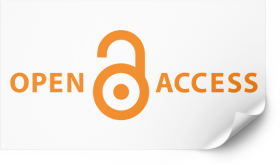Perception and Attitudes towards AI (ChatGPT) in Education: A Focus on TESL Students in Perak
DOI:
https://doi.org/10.37934/picl.1.1.110Keywords:
TESL, ChatGPT, AI-based educational tool, Technology Acceptance Model (TAM), Unified Theory of Acceptance and Use of Technology (UTAUT)Abstract
In this study, we examine how TESL (Teaching English as a Second Language) students think and feel about an AI-based educational tool called ChatGPT. Based on the extant literature drawing from Technology Acceptance Model (TAM) and Unified Theory of Acceptance and Use of Technology (UTAUT), this study utilized a systematic review to integrate research studies within both global and local contexts with respect AI in education. The results highlight elements including perceived usefulness, Ease of use, facilitating conditions, Social influences and cultural context that affect TESL students' acceptance of AI. The study offers suggestions for educators and legislators, shedding light on the possible advantages and difficulties of incorporating AI into TESL curricula.
Downloads
References
[1] Mohd Adnan, Airil Haimi, Mohamad Syafiq Ya Shak, Rafidah Abd Karim, Mohd Haniff Mohd Tahir, and Dianna Suzieanna Mohamad Shah. "360-degree videos, VR experiences and the application of Education 4.0 technologies in Malaysia for exposure and immersion." Advances in Science, Technology and Engineering Systems Journal 5, no. 1 (2020): 373-381.
[2] Amanat, Asma, Ashiq Hussain, and Muhammad Usman Tariq. "Major Influencing Factors in the Learning of Saraiki, Punjabi, Urdu, and English Languages in the Punjab, Pakistan." Pakistan Journal of Social Research 3, no. 4 (2021): 630-640. https://doi.org/10.52567/pjsr.v3i4.323 DOI: https://doi.org/10.52567/pjsr.v3i4.323
[3] Bashiri, Masoud, and Kamran Kowsari. "Transformative influence of llm and ai tools in student social media engagement: Analyzing personalization, communication efficiency, and collaborative learning." arXiv preprint arXiv:2407.15012 (2024).
[4] Meniado, Joel C. "The Impact of ChatGPT on English Language Teaching, Learning, and Assessment: A Rapid Review of Literature." Arab World English Journal 14, no. 4 (2023). https://doi.org/10.24093/awej/vol14no4.1 DOI: https://doi.org/10.24093/awej/vol14no4.1
[5] Dwivedi, Yogesh K., Nripendra P. Rana, Anand Jeyaraj, Marc Clement, and Michael D. Williams. "Re-examining the unified theory of acceptance and use of technology (UTAUT): Towards a revised theoretical model." Information systems frontiers 21 (2019): 719-734. https://doi.org/10.1007/s10796-017-9774-y DOI: https://doi.org/10.1007/s10796-017-9774-y
[6] Godwin-Jones, Robert. "Evolving technologies for language learning." (2021).
[7] Graf-Vlachy, Lorenz, Katharina Buhtz, and Andreas König. "Social influence in technology adoption: taking stock and moving forward." Management Review Quarterly 68 (2018): 37-76. https://doi.org/10.1007/s11301-017-0133-3 DOI: https://doi.org/10.1007/s11301-017-0133-3
[8] Haleem, Abid, Mohd Javaid, and Ravi Pratap Singh. "An era of ChatGPT as a significant futuristic support tool: A study on features, abilities, and challenges." BenchCouncil transactions on benchmarks, standards and evaluations 2, no. 4 (2022): 100089. https://doi.org/10.1016/j.tbench.2023.100089 DOI: https://doi.org/10.1016/j.tbench.2023.100089
[9] Hummel, Dietrich J. "The international vortex flow experiment 2 (VFE-2): background, objectives and organization." Aerospace science and technology 24, no. 1 (2013): 1-9. https://doi.org/10.1016/j.ast.2012.08.008 DOI: https://doi.org/10.1016/j.ast.2012.08.008
[10] Karthikeyan, V., G. Kirubakaran, R. Varun Prakash, and Y. Palin Visu. "Trends and Research Potential with the Use of ChatGPT and Other AI Tools: Application and Challenges of Generative AI Tools." In Applications, Challenges, and the Future of ChatGPT, pp. 30-55. IGI Global, 2024. https://doi.org/10.4018/979-8-3693-6824-4.ch002 DOI: https://doi.org/10.4018/979-8-3693-6824-4.ch002
[11] Kohnke, Lucas, Benjamin Luke Moorhouse, and Di Zou. "ChatGPT for language teaching and learning." Relc Journal 54, no. 2 (2023): 537-550. https://doi.org/10.1177/00336882231162868 DOI: https://doi.org/10.1177/00336882231162868
[12] Lo, Chung Kwan, Philip Leung Ho Yu, Simin Xu, Davy Tsz Kit Ng, and Morris Siu-yung Jong. "Exploring the application of ChatGPT in ESL/EFL education and related research issues: a systematic review of empirical studies." Smart Learning Environments 11, no. 1 (2024): 50. https://doi.org/10.1186/s40561-024-00342-5 DOI: https://doi.org/10.1186/s40561-024-00342-5
[13] Mat, Shabudin Bin, Richard Green, Roderick Galbraith, and Frank Coton. "The effect of edge profile on delta wing flow." Proceedings of the Institution of Mechanical Engineers, Part G: Journal of Aerospace Engineering 230, no. 7 (2016): 1252-1262. https://doi.org/10.1177/0954410015606939 DOI: https://doi.org/10.1177/0954410015606939
[14] Murillo, Gabriel Garcia, Pavel Novoa-Hernández, and Rocio Serrano Rodriguez. "Technology Acceptance Model and Moodle: A systematic mapping study." Information Development 37, no. 4 (2021): 617-632. https://doi.org/10.1177/0266666920959367 DOI: https://doi.org/10.1177/0266666920959367
[15] Nizar, Nur Nabihah Mohamad, Hutkemri Zulnaidi, Annisaa Basar, and Siti Zuraida Maaruf. "A Structural Model of Pre-Service Teachers' Attitude, Acceptance, and Continuance Intention towards Mobile Augmented Reality." Contemporary Educational Technology 16, no. 4 (2024). https://doi.org/10.30935/cedtech/15160 DOI: https://doi.org/10.30935/cedtech/15160
[16] Pang, Samarnh, Engheang Nol, and Kimkong Heng. "ChatGPT-4o for English language teaching and learning: Features, applications, and future prospects." Available at SSRN 4837988 (2024). https://doi.org/10.2139/ssrn.4837988 DOI: https://doi.org/10.2139/ssrn.4837988
[17] Park, Ierei, Donggeun Kim, Jungwook Moon, Seoyong Kim, Youngcheoul Kang, and Sangseok Bae. "Searching for new technology acceptance model under social context: analyzing the determinants of acceptance of intelligent information technology in digital transformation and implications for the requisites of digital sustainability." Sustainability 14, no. 1 (2022): 579. https://doi.org/10.3390/su14010579 DOI: https://doi.org/10.3390/su14010579
[18] Sharma, Yash, et al. "AI Chatbot Using Machine Learning." International Journal for Research in Applied Science and Engineering Technology 12, no. 1 (2024): 1500–1503. https://doi.org/10.22214/ijraset.2024.57932 DOI: https://doi.org/10.22214/ijraset.2024.57932
[19] Siek, Michael, and Ivana Wijaya. "Investigating Cloud-Based Educational Technology Adoption in Advancing Learning Performance." In 2022 4th International Conference on Cybernetics and Intelligent System (ICORIS), pp. 1-8. IEEE, 2022. https://doi.org/10.1109/ICORIS56080.2022.10031577 DOI: https://doi.org/10.1109/ICORIS56080.2022.10031577
[20] Tiwari, Chandan Kumar, Mohd Abass Bhat, Shagufta Tariq Khan, Rajaswaminathan Subramaniam, and Mohammad Atif Irshad Khan. "What drives students toward ChatGPT? An investigation of the factors influencing adoption and usage of ChatGPT." Interactive Technology and Smart Education 21, no. 3 (2024): 333-355. https://doi.org/10.1108/ITSE-04-2023-0061 DOI: https://doi.org/10.1108/ITSE-04-2023-0061
[21] Venkatesh, Viswanath, Michael G. Morris, Gordon B. Davis, and Fred D. Davis. "User acceptance of information technology: Toward a unified view." MIS quarterly (2003): 425-478. https://doi.org/10.2307/30036540 DOI: https://doi.org/10.2307/30036540
[22] Xu, Tianyuan, and Huang Wang. "The effectiveness of artificial intelligence on English language learning achievement." System 125 (2024): 103428. https://doi.org/10.1016/j.system.2024.103428 DOI: https://doi.org/10.1016/j.system.2024.103428
[23] Liang, Yihe. "Balancing: the effects of AI tools in educational context." Frontiers in Humanities and Social Sciences 3, no. 8 (2023): 7-10. https://doi.org/10.54691/fhss.v3i8.5531 DOI: https://doi.org/10.54691/fhss.v3i8.5531
[24] Luo, Tian, Pauline S. Muljana, Xinyue Ren, and Dara Young. "Exploring instructional designers' utilization and perspectives on generative AI tools: A mixed methods study." Educational technology research and development (2024): 1-26. https://doi.org/10.1007/s11423-024-10437-y DOI: https://doi.org/10.1007/s11423-024-10437-y















